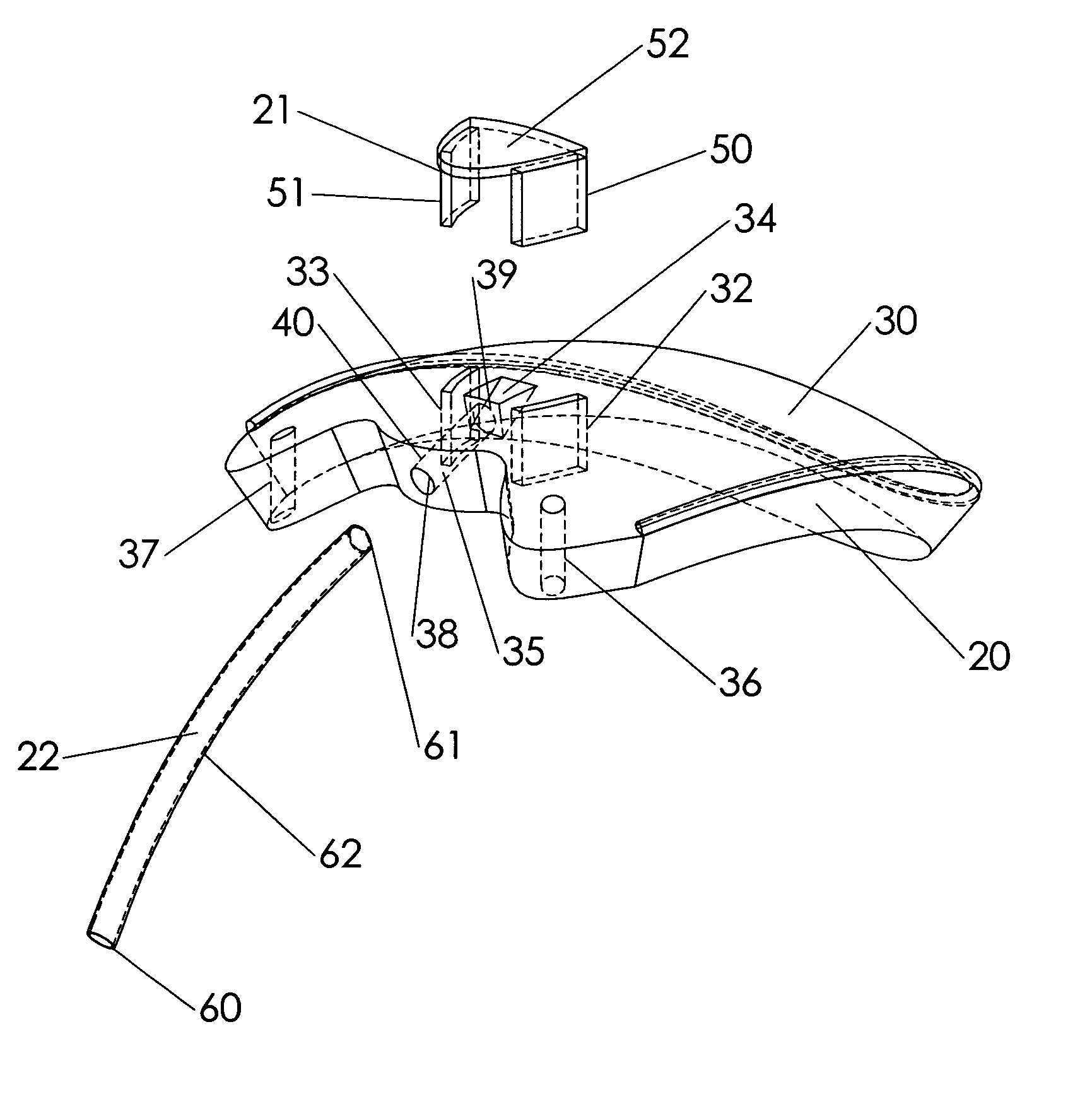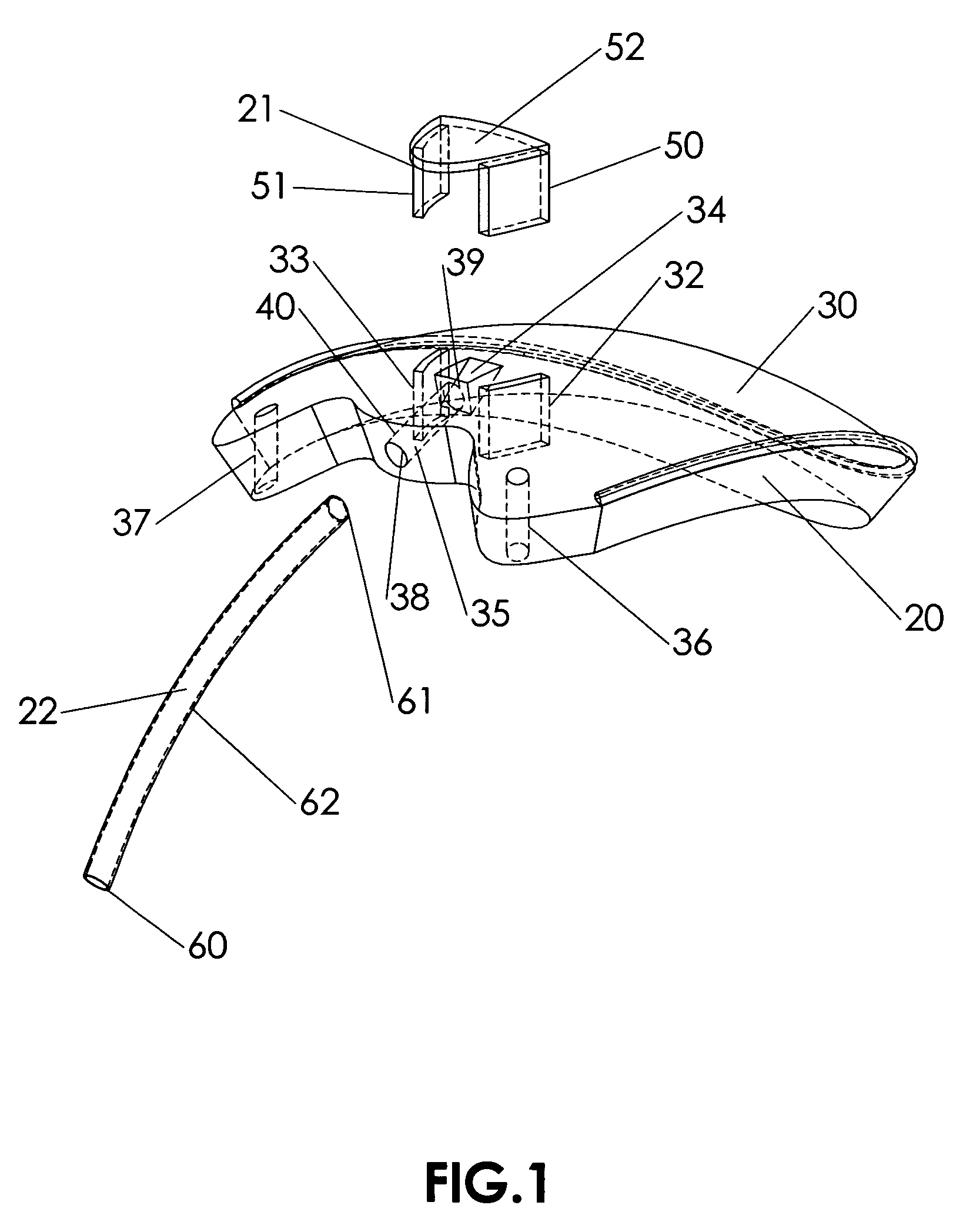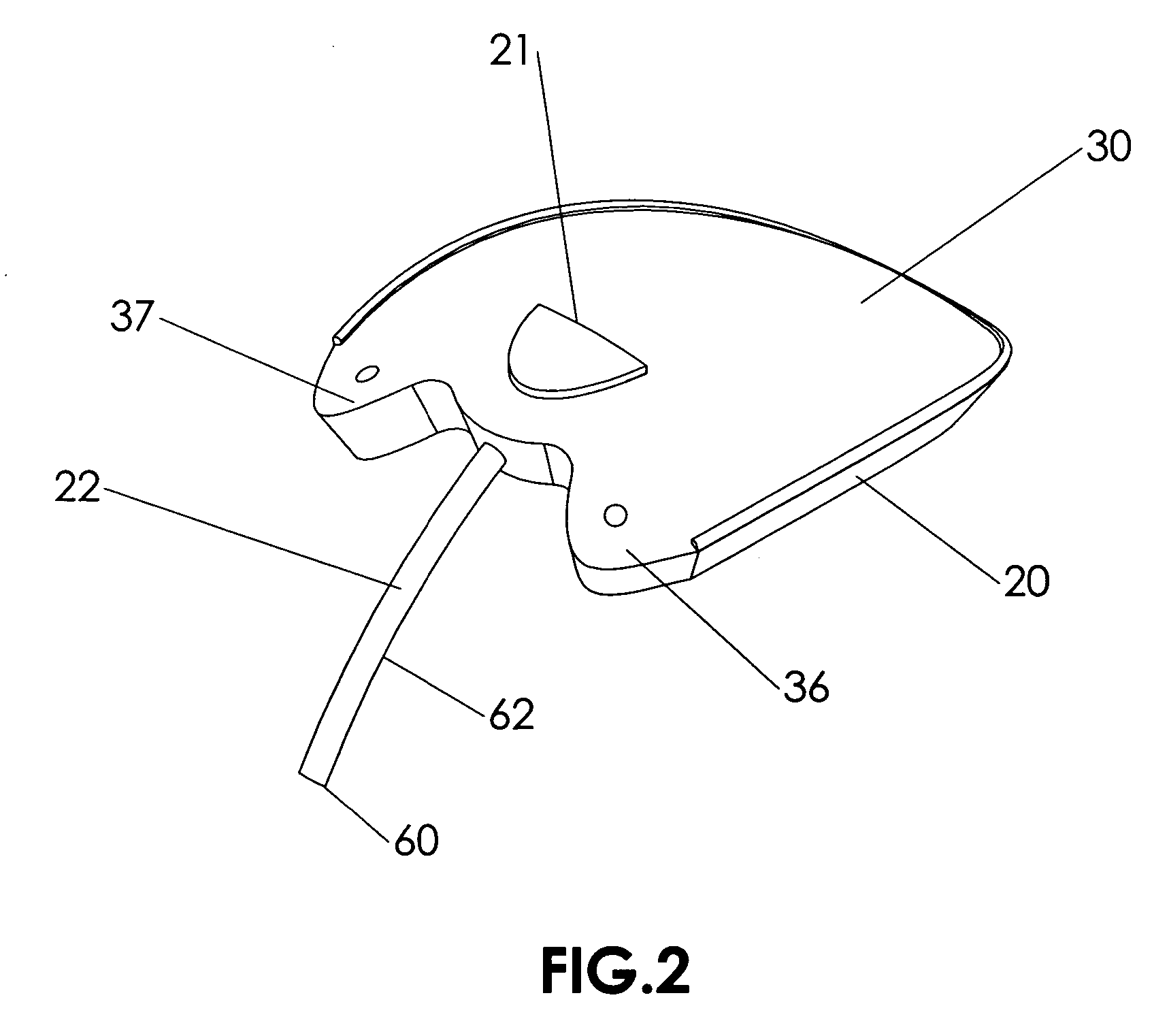Aqueous drainage and flow regulating implant
a flow regulating and water-based technology, applied in the field of water-based drainage and flow regulating implants, can solve the problems of limiting the extent to which the eye's pressure can be reduced with medication, affecting the effect of vision loss and blindness, and increasing the pressure within the eye, so as to reduce post-operative irritation, reduce the effect of excess pressure and convenient manufactur
- Summary
- Abstract
- Description
- Claims
- Application Information
AI Technical Summary
Benefits of technology
Problems solved by technology
Method used
Image
Examples
Embodiment Construction
[0024] As illustrated best in FIG. 1. The implant 10 of present invention is formed in parts from three components: a pliable plate 20, flow regulating member 21 and drainage tube 22. The plate 20 can be offered in different geometrical shapes (Oval, circular, Hexagonal or Trapezoidal). The plate 20 has top curved surface 30 and bottom curved surface 31 (best illustrated in FIG. 7a). The top surface 30 serves as distribution area for aqueous humor received from the anterior chamber of the eye. The curved bottom surface 31 facilitates implant seating on the globe of the eye. As shown in FIG. 3, the plate 20 includes key features that are slot 32, slot 33, pocket 34, circular passageway 35 and implant anchoring holes 36 and 37. The plate 20 is made of Silastic A manufactured by Dow Corning Corporation and is molded to desired geometric shape. The flow regulating member 21 regulates the flow of aqueous drained from the anterior chamber of the eye onto the plate surface 30. As best illu...
PUM
 Login to View More
Login to View More Abstract
Description
Claims
Application Information
 Login to View More
Login to View More - R&D
- Intellectual Property
- Life Sciences
- Materials
- Tech Scout
- Unparalleled Data Quality
- Higher Quality Content
- 60% Fewer Hallucinations
Browse by: Latest US Patents, China's latest patents, Technical Efficacy Thesaurus, Application Domain, Technology Topic, Popular Technical Reports.
© 2025 PatSnap. All rights reserved.Legal|Privacy policy|Modern Slavery Act Transparency Statement|Sitemap|About US| Contact US: help@patsnap.com



